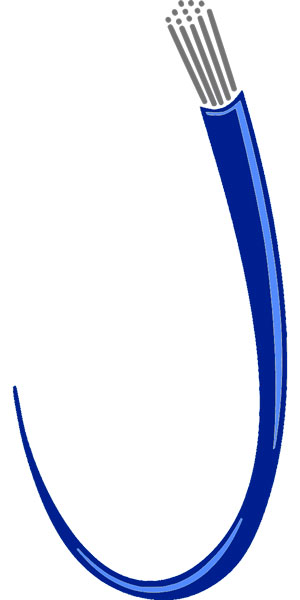By: John Shepler
Increasing bandwidth requirements are a trend in business IT, impacting local networks and leased lines for broader areas. Beyond just bandwidth, factors like latency, packet loss, and jitter are equally crucial. Security remains paramount, while agility in making changes and deploying resources is key for operational smoothness.
 High Bandwidth Demands Necessitate Robust Infrastructure
High Bandwidth Demands Necessitate Robust Infrastructure
The need for greater bandwidth has driven a shift from copper to fiber optic cables. While copper may still be viable for desktop use, external network connections require the capacity of fiber.
Fiber leased lines are available at speeds from 10 Mbps to 10 Gbps and beyond, with 100 Gbps services becoming more accessible. These can be configured as dedicated point-to-point lines or dedicated Internet access, with many businesses requiring a blend of both. While the Internet is vital for client and vendor communication, direct lines to cloud providers and between company sites offer improved performance consistency, reduced latency, and enhanced security.
Wavelengths: Functioning as Private Fiber Connections
Fiber optic cables are considered to have nearly limitless bandwidth, a claim that, while seemingly exaggerated, holds in practical terms. Each cable houses multiple fibers, sometimes exceeding 100 in a bundle, each capable of carrying multiple data streams concurrently through Wavelength Division Multiplexing (WDM).
There are two types of WDM. Coarse WDM divides the fiber into over a dozen laser colors known as Lambdas, all transmitted simultaneously. Dense WDM utilizes more advanced technology to increase this to 80, 96, or more individual wavelengths.
It’s important to understand that each wavelength acts as an independent fiber, oblivious to other wavelengths on the same strand. Leasing a wavelength gives you exclusive use of its entire bandwidth, potentially as high as 10 Gbps. Should you need more, you can lease additional wavelengths. Until the fiber bundle reaches capacity, laying more cable is unnecessary.
Dark Fiber: Offering Unparalleled Control
Having an entire fiber to yourself is ideal but often cost-prohibitive. While feasible on your property, establishing connections across cities or the country with your own fiber is typically unrealistic unless you’re a carrier service provider.
However, there’s a way to essentially have your own fiber: leasing an unused strand from a provider. This is more feasible than it seems. Installing a single fiber strand is less cost-effective than burying a multi-strand cable or multiple multi-strand cables during the initial installation, providing the carrier with ample capacity for future expansion.
These unused strands are called “dark” fiber due to the absence of laser light. Activating this fiber becomes your responsibility. The carrier provides access points at each end, leaving the rest to you.
While this option is beyond the scope of smaller companies, larger, more technologically advanced organizations can leverage dark fiber for research labs, medical facilities, video production and distribution, engineering, manufacturing, and other demanding applications.
Advantages of Dark Fiber
Having exclusive rights to a fiber is the closest alternative to owning one. You are responsible for providing termination equipment and managing those resources, which may include your own DWDM equipment to generate multiple wavelengths for utilizing the available bandwidth.
The absence of shared bandwidth eliminates the need for multiplexers along the route, minimizing latency as the fiber serves your locations exclusively. Unlike the Internet, there are no routers along the path, ensuring minimal and consistent latency.
Security is another major advantage of dark fiber. Bandwidth isn’t shared among customers, similar to the old “nailed up” copper private lines. While trust in the fiber operator is necessary, there are no concerns about other customers. Layering encryption on top of dedicated fiber provides the highest level of security achievable for point-to-point transmission.
Dark Fiber Availability
The widespread deployment of fiber for Internet, cable television, and cellular towers has led to increased availability of dark fiber. Competitive fiber network operators and cable providers often have significant surplus capacity and are eager to lease unused strands, especially when they have many sitting idle.
If your business requires the capacity, flexibility, and security that dark fiber offers, explore the dark fiber options available for your locations.

